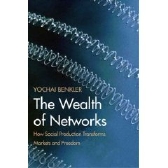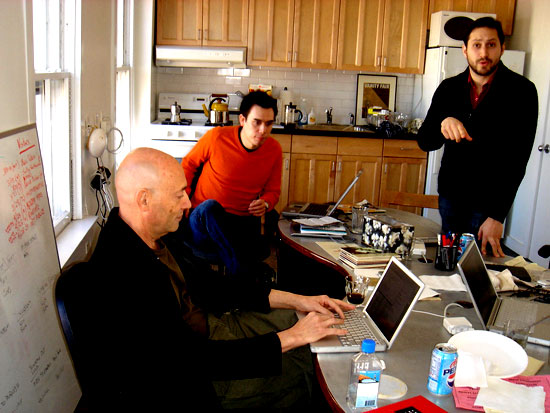 In his recent article “Why We Need a Corporation for Public Gaming,” David Rejeski proposes the creation of a government funded entity for gaming to be modeled after the Corporation for Public Broadcasting (CPB). He compares the early days of television to the early days of video gaming. 20 years after the birth of commercial broadcast television, he notes that the Lyndon Johnson administration created CPB to combat to the “vast wasteland of television.” CPB started with an initial $15 million budget (which has since grown to $300 million). Rejeski propose a similar initial budget for a Corporation for Public Gaming (CPG). For Rejeski, video games are no longer sequestered to the bedroom of teenage boys, and are as an important medium in our culture as is television. He notes “that the average gamer is 30 years old, that over 40 percent are female, and that most adult gamers have been playing games for 12 years.” He also cites examples of how a small but growing movement of “serious games” are being used towards education and humanitarian ends. By claiming that a diversity of video games is important for the public good, and therefore important for the government to fund, he implies that these serious games are good for democracy.
In his recent article “Why We Need a Corporation for Public Gaming,” David Rejeski proposes the creation of a government funded entity for gaming to be modeled after the Corporation for Public Broadcasting (CPB). He compares the early days of television to the early days of video gaming. 20 years after the birth of commercial broadcast television, he notes that the Lyndon Johnson administration created CPB to combat to the “vast wasteland of television.” CPB started with an initial $15 million budget (which has since grown to $300 million). Rejeski propose a similar initial budget for a Corporation for Public Gaming (CPG). For Rejeski, video games are no longer sequestered to the bedroom of teenage boys, and are as an important medium in our culture as is television. He notes “that the average gamer is 30 years old, that over 40 percent are female, and that most adult gamers have been playing games for 12 years.” He also cites examples of how a small but growing movement of “serious games” are being used towards education and humanitarian ends. By claiming that a diversity of video games is important for the public good, and therefore important for the government to fund, he implies that these serious games are good for democracy.
Rejeski raises an important idea (which I agree with), that gaming has more potential activities than saving princesses or shooting everything in sight. Fortunately, he acknowledges that government funded game development will not cure all the ill effects he describes. In that, CPB funded television programs did not fix television programming and has its own biases. Rejeski admits that ultimately “serious games, like serious TV, are likely to remain a sidebar in the history of mass media.” My main contention with Rejeski’s call is his focus on the final product or content, in this case, comparing a video game with a television program. His analogy fails to recognize the equally important components of the medium, production and distribution. If we look at video games in terms of production, distribution as well as content, the allocation of government resources envision a different outcome. In this analysis, a more efficient use of funds would be geared towards creating tools to create games, insuring fair and open access to the network, and less emphasis funded towards the creation of actual games.
1. Production:
Perhaps, rather than television, a better analogy would be to look at the creation of the Internet, which supports many to many communication and production. What started as a military project under DARPA, Internet protocols and networks became a tool which people used for academic, commercial, and individual purposes. A similar argument could be made for the creation of a freely distributed game development environment. Although the costs associated with computation and communication are decreasing, high-end game development budgets for titles such as the Sims Online and Halo 2 are estimated to run in the tens of millions of dollars. The level of support are required to create sophisticated 3D and AI game engines.
Educators have been modding games of this caliber. For example, the Education Arcade’s game, Revolution, teaches American History. The game was created using the Neverwinter Nights game engine. However, problems often arise because the actions of characters are often geared towards the violent, and male and female models are not representative of real people. Therefore, rather than focusing on the funding of games, creating a game engine and other game production tools to be made open source and freely distributed would provide an important resource for the non-commerical gaming community.
There are funders who support the creation of non-commerical games, however as with most non-commerical ventures, resources are scare. Thus, a game development environment, released under a GPL-type licensing agreement, would allow serious game developers to use their resources for design and game play, and potentially address issues that may be too controversial for the government to fund. Issues of government funding over controversial content, be it television or games, will be addressed further in this analysis.
2.Distribution:
In Rejecki’s analogy of television, he focuses on the content of the one to many broadcast model. One result of this focus is the lack of discussion on the equally important use of CPB funds to support the Public Broadcast Services (PBS) that air CPB funded programs. By supporting PBS, an additional voice was added to the three television networks which in theory is good for a functioning democracy. The one to many model also discounts the power of the many to many model that is enabled by a fairly accessible network.
In the analogy of television and games, air waves and cables are tightly controlled through spectrum allocation and private ownership of cable wires. Individual production of television programming is limited to public access cable. The costs of producing and distributing on-air television content is extremely expensive, and does not decreasingly scale. That is, a two minute on-air television clip is still expensive to produce and air. Where as, small scale games can be created and distributed with limited resources. In the many to many production model, supporting issues as network neutrality or municipal broadband (along with new tools) would allow serious games to increase in sophistication, especially as games increasingly rely on the network for not only distribution, but game play as well. Corporation for Public Gaming does not need to pay for municipal broadband networks. However, legislative backers of a CPG need to recognize that an open network are equally linked to non-commerical content, as the CPB and PBS are. Again, keeping the network open will allow more resources to go toward content.
3. Content:
The problem with government funded content, whether it be television programs or video games, is that the content will always been under the influence of the mainstream cultural shifts. It may be hard to challenge the purpose of creating games to teach people about children diabetics glucose level management or balancing state budgets. However, games to teach people about HIV/AIDS education, evolution or religion are harder for the government to fund. Or better yet, take Rejeski’s example of the United Nation World Food Program game on resource allocation for disaster relief. What happens with this simulation gets expanded to include issues like religious conflicts, population control, and international favoritism?
Further, looking at the CPB example, it is important to acknowledge the commercial interests in CPB funded programs. Programs broadcast on PBS receive funding from CPB, private foundations, and corporate sponsorship, often from all three for one program. It becomes increasingly hard to defend children’s television as “non-commerical,” when one considers the proliferation of products based on CPB funded children’s educational shows, such as Sesame Street’s “Tickle me Emo” dolls. Therefore, we need to be careful, when we discuss the CPB and PBS programs as “non-commercial.”
Therefore, commercial interests are involved in the production of “public television,” and will be effected by commerical interests, even if it is to a lesser degree than commercial network programming. Investment in fair distribution and access to the network , as well as the development of accessible tools for gaming production would allow more opportunity for the democratization of game development that Rejeski is suggesting.
Currently, many of the serious games being created are niche games, with a very specific, at times, small audience. Digital technologies excel in this many to many model. As opposed to the one to many communication model of television, the many to many production of DYI game design allows for many more voices. Some segment of federal grants to support these games will fall prey to criticism, if the content strays too far from the current mainstream. The vital question than, is how do we support the diversity of voices to maintain a democracy in the gaming world given the scare resource of federal funding. Allocating resources towards tools and access may then be more effective overall in supporting the creation of serious games. Although I agree with Rejeski’s intentions, I suggest the idea of government funded video games needs to expand to include production and distribution, along with limited support of content for serious games.
 I was lucky enough to have a chance to be at The Wealth of Networks: How Social Production Transforms Markets and Freedom book launch at Eyebeam in NYC last week. After a short introduction by Jonah Peretti, Yochai Benkler got up and gave us his presentation. The talk was really interesting, covering the basic ideas in his book and delivered with the energy and clarity of a true believer. We are, he says, in a transitional period, during which we have the opportunity to shape our information culture and policies, and thereby the future of our society. From the introduction:
I was lucky enough to have a chance to be at The Wealth of Networks: How Social Production Transforms Markets and Freedom book launch at Eyebeam in NYC last week. After a short introduction by Jonah Peretti, Yochai Benkler got up and gave us his presentation. The talk was really interesting, covering the basic ideas in his book and delivered with the energy and clarity of a true believer. We are, he says, in a transitional period, during which we have the opportunity to shape our information culture and policies, and thereby the future of our society. From the introduction:
 Farrar, Straus and Giroux have ventured into waters pretty much uncharted by a big commercial publisher, putting the entire text of one of their latest titles online in a form designed to be read inside a browser.
Farrar, Straus and Giroux have ventured into waters pretty much uncharted by a big commercial publisher, putting the entire text of one of their latest titles online in a form designed to be read inside a browser. 
 An
An  The raw materials are
The raw materials are  It’s immediately apparent that most of these films are for the left. This isn’t an isolated occurance: the Italian left seems to have understood that the network can be a political force. In January, I
It’s immediately apparent that most of these films are for the left. This isn’t an isolated occurance: the Italian left seems to have understood that the network can be a political force. In January, I 



 Social bookmarking site del.icio.us
Social bookmarking site del.icio.us 

 Momus is a Scottish pop musician, based in Berlin, who writes smart and original things about art and technology. He blogs a wonderful blog called
Momus is a Scottish pop musician, based in Berlin, who writes smart and original things about art and technology. He blogs a wonderful blog called 
